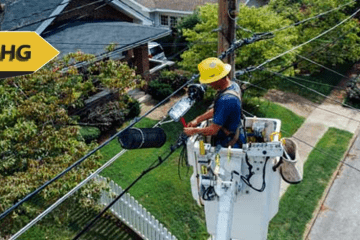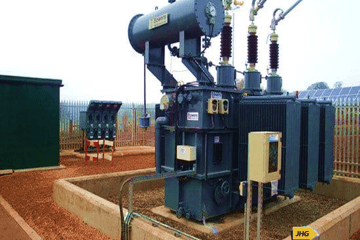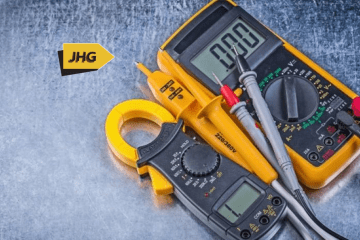In a world driven by technology and powered by electricity, maintaining safe and efficient energy distribution has never been more crucial. Whether you’re managing an industrial facility, a commercial complex, or a residential building, voltage control plays a key role in protecting your electrical systems. One of the unsung heroes in this equation is the step-down transformer — a device designed to convert high-voltage electricity into the lower voltage levels your equipment actually needs.
At Just HardRich Global Resources Limited, we understand how essential the right transformer can be to your operations. As Nigeria’s choicest Electrical Power and Control Engineering Company, we’ve helped clients across industries deploy safe, efficient, and durable transformer systems that keep power flowing seamlessly.
If you’re planning to install a step-down transformer, here’s an in-depth guide on the most important features to consider before making your choice.
Understanding What a Step-Down Transformer Does
Simply put, a step-down transformer reduces high-voltage electricity from a primary source into a lower, usable voltage level suitable for your equipment or devices. For example, a 415V input might be stepped down to 240V, 220V, or even lower depending on the application.
This voltage adjustment is vital for equipment safety, efficiency, and longevity. Without it, you risk power surges, overheating, or even electrical fires — issues that can cost businesses millions in damages or downtime.
In Nigeria, where fluctuating power supply and unstable voltage are common, step-down transformers are not just helpful; they are indispensable. Whether it’s for a manufacturing plant, hospital, data center, or residential estate, transformers bridge the gap between unreliable supply and reliable performance.
How Step-Down Transformers Work
A step-down transformer operates based on a simple but powerful principle of electromagnetic induction. Inside, it consists of two coils — a primary coil (connected to the input voltage) and a secondary coil (connected to the output load). The primary coil always has more turns of wire than the secondary. When alternating current (AC) flows through the primary coil, it induces a magnetic field that transfers energy to the secondary coil, thus reducing the voltage to the required level.
There are two major types of step-down transformers:
- Isolation Transformers – These have separate primary and secondary windings, providing complete electrical isolation between the input and output. They’re ideal for sensitive equipment where protection from power disturbances is essential.
- Auto-Transformers – These use a single winding with different tap points for input and output. They’re more compact, affordable, and suitable for applications where isolation isn’t necessary.
At Just HardRich Global Resources Limited, we evaluate your unique electrical setup before recommending the best transformer type. This ensures you get a system designed for performance, safety, and durability.
Key Features to Consider When Choosing a Step-Down Transformer
Selecting the right transformer involves more than checking voltage ratings — it’s about matching design, performance, and safety to your specific use case. Here are the most critical features to consider:
1. Power Rating and Load Capacity
The power rating, expressed in kilovolt-amperes (kVA), indicates how much load your transformer can handle. Underrating your transformer can lead to overheating and eventual failure.
Before purchasing, calculate the total power requirement of all devices that will be connected. For industrial or commercial setups, it’s wise to leave at least 25% buffer capacity for future expansion.
Pro Tip: If your facility frequently operates heavy machinery or motor-driven equipment, consider a transformer with a slightly higher kVA rating to accommodate start-up surges.
2. Voltage Compatibility
Make sure the input and output voltages of the transformer match your equipment’s requirements. For example, in Nigeria, standard supply voltage is 415V for three-phase systems and 240V for single-phase. However, imported machinery — especially from countries like the U.S. or Japan — may operate on different voltages (e.g., 208V, 200V).
The transformer you select should effectively bridge this gap without compromising stability.
At Just HardRich Global Resources Limited, we help clients design custom step-down transformers that match specific operational voltages — ensuring smooth, uninterrupted power flow to your equipment.
3. Quality of Materials and Construction
The longevity of a transformer depends heavily on the quality of its materials — from the copper windings to the core laminations and insulation systems. Poor-quality materials can lead to losses, overheating, and early failure.
We recommend opting for transformers built with high-conductivity copper windings, robust insulation, and core materials designed to minimize hysteresis losses.
At Just HardRich, we partner with trusted component manufacturers and apply rigorous quality assurance checks on every project to ensure you get engineering that lasts for decades, not years.
4. Cooling Method
Transformers generate heat during operation, so an efficient cooling system is essential. The two main cooling types are:
- Air-cooled (Dry Type) – Ideal for indoor environments such as offices or hospitals where fire safety and low maintenance are priorities.
- Oil-cooled (Liquid Immersed) – Common in industrial or outdoor applications, offering better cooling efficiency and durability under heavy loads.
Our engineers at Just HardRich Global Resources Limited carefully assess the operating environment before recommending a cooling method that ensures optimal performance and safety.
5. Safety Features and Protection Mechanisms
Safety is a non-negotiable feature in transformer design. Look for transformers equipped with:
- Overload protection
- Short-circuit protection
- Grounding and surge suppressors
- Temperature monitoring systems
Modern transformers now integrate IoT-based monitoring tools that track temperature, oil levels, and voltage fluctuations in real-time. These innovations allow maintenance teams to identify faults early and prevent costly downtime.
As part of our Power and Control Engineering Services, Just HardRich implements smart protection systems that meet international safety standards and support remote monitoring.
6. Energy Efficiency and Power Losses
Transformers inherently experience core losses (iron losses) and copper losses, but quality design minimizes these inefficiencies. When choosing a transformer, always check for energy efficiency ratings or low-loss core materials.
At Just HardRich, we design systems that comply with modern energy efficiency standards, helping clients cut operational costs and reduce carbon footprints — aligning with global sustainability trends.
7. Noise Level
Noise may not seem like a major concern until you install a transformer near offices, hospitals, or residential areas. Transformers generate humming sounds due to magnetostriction in the core. High-quality design and proper mounting can drastically reduce this noise.
Our engineers use advanced vibration isolation techniques and noise-dampening enclosures to deliver quieter transformer installations.
8. Maintenance and Service Support
No transformer — no matter how well-built — can perform optimally without proper maintenance. Choosing a supplier who offers ongoing technical support, routine inspection, and after-sales service is just as important as choosing the right transformer itself.
That’s why Just HardRich Global Resources Limited provides comprehensive maintenance services, including thermal imaging inspections, oil testing, and efficiency audits. We don’t just install; we partner with you for the long run.
9. Custom Design and Future-Proofing
Off-the-shelf transformers might not always meet your exact power needs. A custom-built transformer, designed according to your operational environment and future energy demands, offers greater flexibility and efficiency.
At Just HardRich, we excel at designing bespoke transformer solutions — from compact control transformers for automation panels to large power distribution units for industrial applications.
Emerging Trends and Innovative Tools in Transformer Design
The world of electrical engineering is evolving fast, and transformers are no exception. Modern step-down transformers now integrate:
- Digital monitoring systems for predictive maintenance
- Smart control panels for remote diagnostics
- Eco-friendly insulating materials
- High-efficiency amorphous cores that reduce energy loss
These innovations are shaping the next generation of power management systems. As a forward-thinking company, Just HardRich Global Resources Limited stays ahead by adopting these technologies to help Nigerian industries achieve sustainable, reliable, and cost-effective power solutions.
Final Thoughts
Choosing the right step-down transformer is not just a technical decision — it’s an investment in your facility’s safety, efficiency, and future. When you partner with Just HardRich Global Resources Limited, you’re not just buying a transformer; you’re gaining access to decades of expertise, custom-engineered solutions, and unmatched after-sales support.
So, whether you’re upgrading your electrical systems, powering industrial machinery, or improving voltage stability in your building, trust Just HardRich Global Resources Limited — Nigeria’s top choice for Electrical Power and Control Engineering Services — to deliver precision, performance, and peace of mind.




